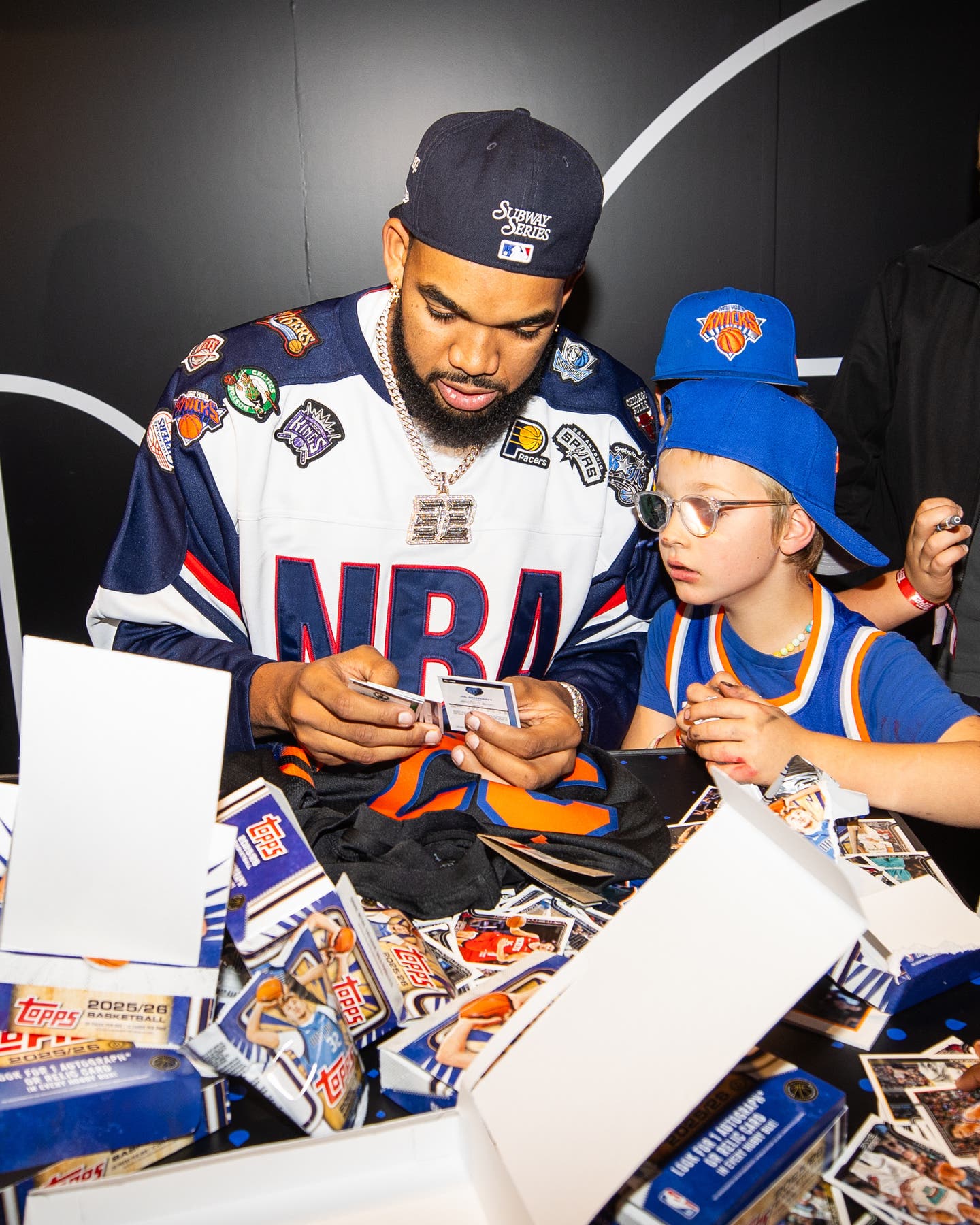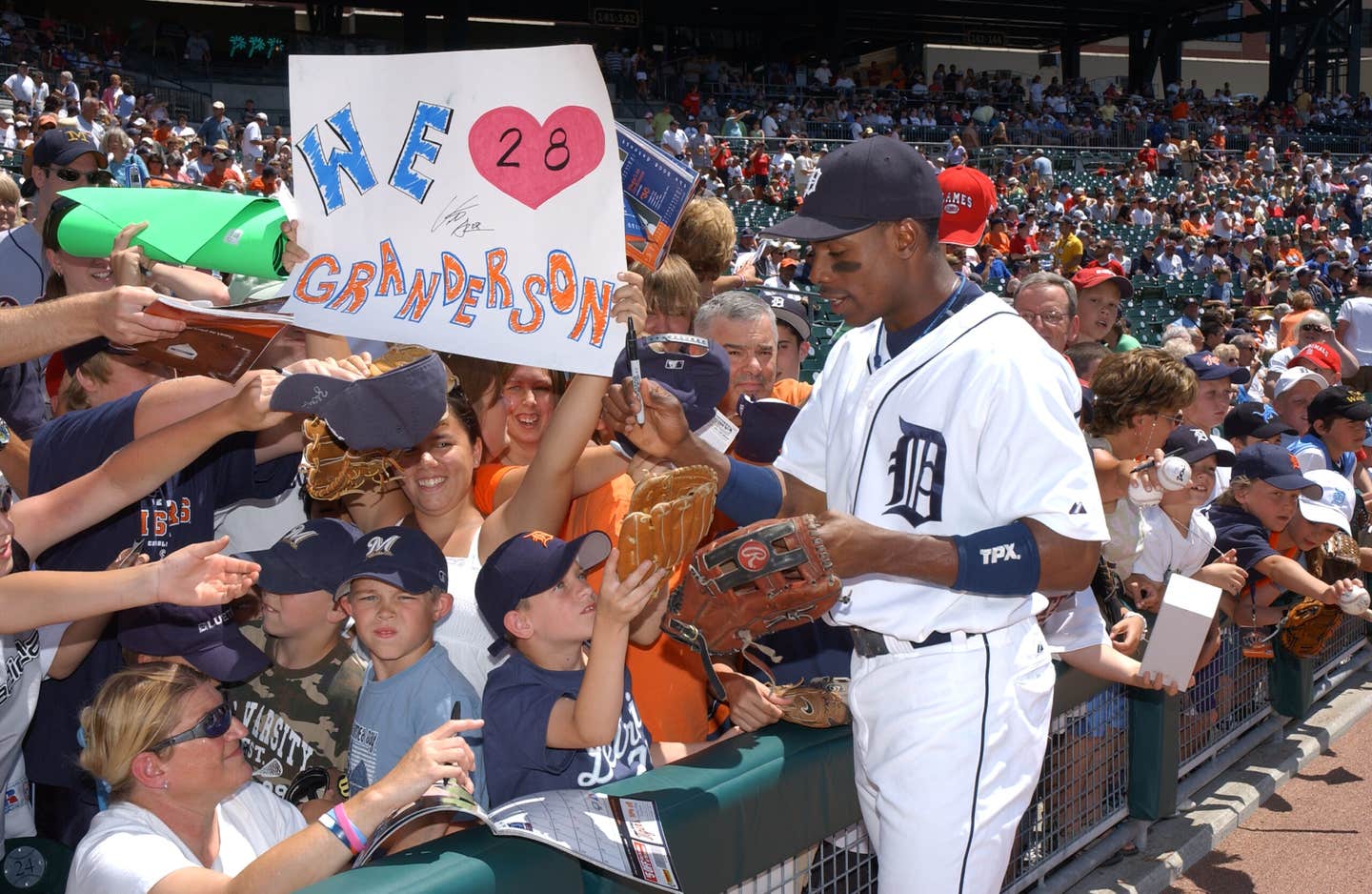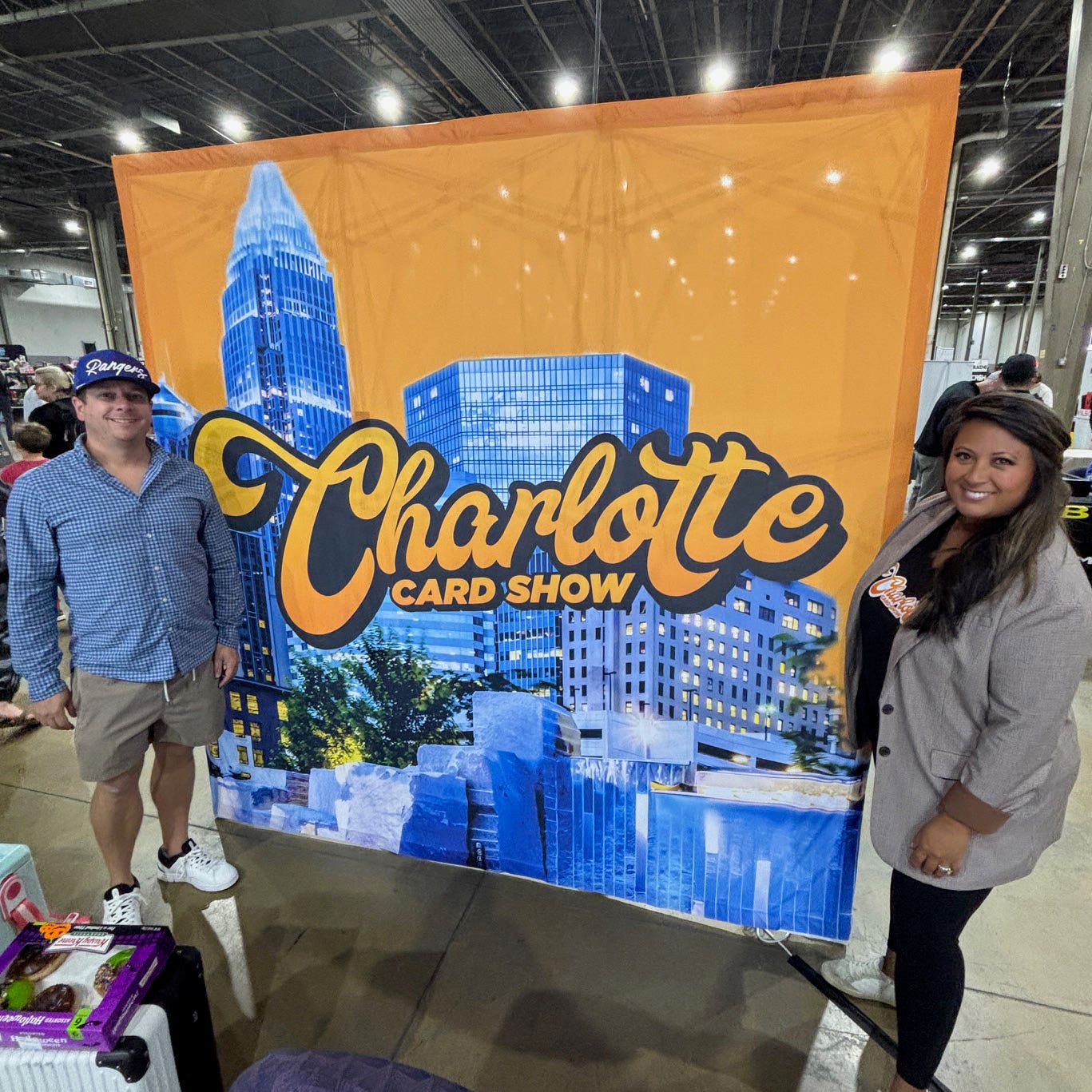Collector Stories
‘Goody’ Goldfaden: West Coast hobby giant
Baseball collector trivia question: “Who was born on Nov. 25, 1914?” If you answered, “Joe DiMaggio,” you would only be half right. The other famous person (to baseball collectors) born on that same day is Goodwin Goldfaden. If you then properly asked, “Who is Goodwin Goldfaden?” it would show that you’ve only been collecting for a lousy 20 or 30 years or that you aren’t from the West Coast.
Goldfaden’s Adco Sports Book Exchange
Goodwin Goldfaden was an unusual name I had noticed several times in doing research for previous SCD articles on Jefferson Burdick, Lionel Carter, Buck Barker, Bob Solon and Harry Lilien. Goldfaden advertised in Hobbies Magazine in the 1930s and was mentioned in several early hobby publications under the name Adco Sports Book Exchange, Goodwin Goldfaden, Proprietor. His name caught my attention and I thought: Here was a guy who was into buying and selling mountains of material when no one else was. He was a dealer but he also must have been a sports fan and collector. The other early hobby pioneers were trading a nickel’s worth of cards; somehow, Goldfaden had found a way to make the hobby a full-time profession. There were old stories about the piles of sports magazines bulging out of his garage and that if you needed something and were willing to pay for it, you should get in touch with Goodwin Goldfaden.
When we think of our first-grade teachers, we assume that they must be 100 years old now because they seemed very old to us when we were little kids. We are then pleasantly surprised to find them still walking around, able to take solids and breathing on their own. I was likewise surprised when I learned that Goodwin Goldfaden was very much alive and, incredibly, still active in buying and selling hobby material – and he was only 93 years old!
Jim McConnell and Goldfaden
Jim McConnell of Covina, Calif., contacted me to let me know that he shared my interest in the profiles of hobby pioneers. McConnell has written for SCD and The Trader Speaks and writes professionally for the San Gabriel Valley Newspaper Group. He thought that Goldfaden would be an excellent subject for a hobby profile.
McConnell wrote: “I have known him for 40 years now, and visited his shop and home many times, and I absolutely guarantee you, he is, with the possible exception of Woody Gelman, responsible for more material entering our hobby than anyone else. What he has uncovered, and sold or traded, over the course of 80 years is easier to sum up thusly: Think of the Wagner T206 card. Now, think of everything else. Goodie has had everything pass through his hands EXCEPT a Wagner.”
Advertising for more than 80 years
I found Goodwin Goldfaden’s name in the phone directory for Sherman Oaks, Calif., and gave him a call. “Goodie,” as he is called, is an exceptional nonagenarian (meaning those from 90 to 99 years old). He is married, lives independently, talks quickly, remembers vividly, carries on a business, and drives his car on the L.A. freeways. He is also still advertising to buy and sell, as I found in the January 2008 issue of West Coast Peddler. His ad states he is looking for “Baseball, football, basketball, boxing, wrestling, jiu jitsu, Olympics, track and field athletics, billiards, body building, and other sports. Desire books, magazines, programs, tickets, other items 1860 to date.”
I thought, “Why not look for the 1850 stuff as well?” Then I vaguely remembered the language sounded familiar. I dug out a 1950 issue of The Card Collector’s Bulletin (the earliest hobby publication founded by the father of card collecting, Jefferson Burdick) and located an ad from Goldfaden. He wanted, “baseball, football, basketball, track boxing, and other sports guides ... magazines, programs, papers from 1860 to date.” I noted that, like many of us trying to stay active in the hobby, he had expanded his interests into wrestling, jiu jitsu, Olympics, billiards, and body building over the past 58 years but the 1860 date was still a good starting point for him.
Goldfaden told me that he had been advertising to buy, sell or trade sports material since 1925 when he was 11 years old. I went back as far as I could and found his $5 per year ad in my August 1937 issue of Hobbies Magazine listing him under “Baseballiana” looking for “Reach and Spaulding Baseball Guides from 1876-1930, inclusive, in any quantity.” (I guess it took him awhile to get revved up about the older stuff from 1860-75. To the 1937 reader, the 1876 material would be like looking for 1947 items today.) In this same issue of Hobbies, Burdick wrote one of his earliest hobby articles on “Tobacco Cards since 1900,” having covered earlier tobacco cards in a previous Hobbies issue.
The Non-Interview
Like many of his fellow L.A. luminaries, Goodie avoids big-time media types, such as SCD columnists. He said that plenty had been written about him over the years in newspapers and even Sports Illustrated and that he didn’t want to be interviewed or get together, although I was only a few miles away at the time. He did take the information from me as to my interests (early hobby publications) and promised to look over the material in his off-site storage area and get back to me. Although he didn’t want to be “interviewed,” he was willing to talk to me by phone twice at some length. I learned that he:
- Shares the same birth date as DiMaggio
- Considers himself the first dealer in sports collectibles
- Started in his hometown of Cleveland until moving to California in 1947
- Had five different warehouses where he stored material
- Had a shop in L.A. for some 30 years, most recently at 7402 Santa Monica Blvd.
- Has been a longtime SABR member
- Sold virtually his entire inventory more times than he can remember
- Sold some one-half million publications to the University of Notre Dame for their archives
- Attended the 1970 Jim Nowell “show” in California, along with Lionel Carter and about a dozen others
- Is an old friend of Ernie Harwell, Detroit Tiger broadcaster
- Mentioned Bill Mastro, Pat Quinn, Bob Jasperson, and Charles Bray among the many hobby people he has known
- Felt that he was “disorganized.”
Goldfaden told me that several different professional coaches had contacted him in the past to get publications related to very technical aspects of their sport. He enjoyed being the wealth of knowledge and a resource. He said, “Everything has turned over hundreds of times.” He added that he “was not a collector at this stage of the game,” and that it was probably time to start selling the inventory rather than building it, although stuff has a way of coming to him all the time.
McConnell fills in the blanks
McConnell graciously filled me in on much that I still didn’t know about Goldfaden. He wrote: “Goldfaden’s parents’ house in Cleveland was a few blocks from League Park, home of the Indians. Goodie sold programs and pennants outside the park at age 10, which no doubt inspired his future occupation. Baseball remains his favorite sport. He and his older brother (now deceased) weren’t big on collecting baseball cards (there weren’t any regular issues in the 1920s, unlike the Topps sets of today), but did begin to save everything baseball related. Goodie took a special interest in old baseball guides and magazines. As a kid, his fondest memory is of seeing Babe Ruth play at League Park. He also attended the first Indians game ever played at Municipal Stadium.”
McConnell went on to describe for me how Goodie and his brother progressed to driving to other cities to buy material. When the Depression hit and his assets consisted of piles of sports publications, Goodie decided to become a book dealer with sports as his specialty. (He continued to deal in non-sports publications well into the 1980s.)
In the mid-1930s, he met Ernie Harwell in Atlanta, who was a collector of baseball publications and they began swapping baseball guides and other publications. Goodie was advertising in Hobbies Magazine, The Sporting News and Street & Smith publications while building a huge clientele and dealing in virtually every sport. He made major sales to libraries and individual collectors, including the International Olympic Committee, Bruce Lee, James Earl Jones, and the University of Notre Dame.
Goldfaden told McConnell, “I never wanted to limit my operation to your average nickel-and-dime collector. If I had done that, I would never have been able to stay in business ... You get an organization like IOC making a big buy, and that really keeps things going ... The IOC doesn’t have the time or the knowledge to go around the country or the world tracking down stuff down, but I did.”
Go West, young man
In 1947 Goldfaden decided to enjoy the warmer, healthier climate of Los Angeles. On the way from Cleveland he stopped to see Buck Barker in St. Louis. Goldfaden described it all in a 1956 letter to Lionel Carter, pioneer collector and writer from Evanston, Ill. “The wife and I had a most pleasant visit with Buck Barker. No matter where I go I always manage to contact someone with whom I had correspondence with or dealings in the past.” Goldfaden regretted that the “national” show planned for Chicago that year had not happened. Goldfaden arrived in Los Angeles and opened a store on Santa Monica Boulevard in West Hollywood. Goodie told McConnell, “I wanted to be located close by the movie studios, had some ties with the studios and felt that would be a good market for me. It worked out OK, sold a lot of stuff to the studios and actors over the years. I had a lot of actors visit my store, just as collectors or researching a part.”
Goodie and the cards
Goldfaden told McConnell, “When I first started in the business, no one was really bothering to pick up the baseball cards, so I acquired a lot of collections for a song. I doubt if I ever paid more than $5,000 for a baseball card collection. Had a chance to get a couple huge collections (Preston Orem’s and Walt Corson’s), but, to me, they were overpriced. So I passed.”
Goodie had plenty of Topps sets, including complete 1952 sets priced at $100 in the 1960s, which seemed a bit high to many collectors. He had a shipping box full of 1964 Topps Giants, which he grabbed before they were destroyed. I’ve wondered why 1964 Topps Giants can sometimes be found in quantities and in great condition. They may have come via Goodie. According to McConnell, “Goodie also had tons (literally) of the Dodgers Union Oil Volpe portraits from the 1960s, also rescued from the recycling bin. It was easy to spot a collector who dealt with Goodie: They would always have a complete set of 1953 Mothers Cookies, a complete set of 1964 Topps Giants, and complete sets of the Volpe portraits.”
His store on Santa Monica was compact, with room for only a few customers in the front. He had cards in various cigar boxes among the publications, correspondence, posters, photos and movies. He had something for anyone interested in sports. Goodie closed the store in 1978, but continued to operate out of his home and warehouses without missing a beat and still accumulating material, selling practically everything and then starting over again.
Bill Mastro and Goldfaden
Mastro, long-time collector and founder of Mastro Auctions, regretted not being able to do more with Goldfaden in the 1960s and 1970s. “I was a young punk kid and a pain in the ass” to guys like Goodie, he said. “We did do a couple of deals and he uses our auction house from time to time.” Mastro visited Goodie more recently and described him as “a bulldog, small but not frail ... sharp as a tack, not missing anything, unbelievable.” (McConnell described him as a “dynamo.”) Mastro sat with Goodie in his living room discussing a proposed transaction and joked that “on this deal I think I can take you.” Goodie’s wife, Frieda, overheard this comment from the kitchen and responded, “I don’t think sooo.”
It’s a business
Mastro commented that Goodie had “long-standing relations with tons of people. His store was filled to the rafters. He had an unbelievable client list and dealt in all sports.”
Goldfaden would stamp “Adco Sports Book Exchange” on publications he sold as a way of advertising and being able to identify an item if it ever came back to him. Mastro and others felt Goodie’s prices were a bit robust, but he had good material and Goodie was a full-time dealer. He always ran it as a business.
I remember another early publication and card dealer, Samuel Tanenbaum of Hartford, Conn., writing to Carter in 1959 about “the relationship of the dealer to the collector. The dealer has to show a profit for his time and money. He will naturally gravitate to those who will give him most of that profit. The dealer is most invaluable to the collector, and the smart collector realizes that. For he knows that the dealer is only interested in making a living, while brother collectors will ... get prices from each other that have made me blush in shame. I find this game most profitable in dealing with those collectors who will buy all and everything which they haven’t got along their collecting line. If a man collects baseball cards, I like to see him collect everything in baseball cards ... you only want to collect certain types of cards, and to cater to a collector like yourself, I have to expend too much time, in trying to suit you. There is no money in my selling four cards.”
Likewise, Goldfaden was not too enthused about selling small lots or looking through mountains of material for a few baseball cards. He would often price the baseball cards well over the current market. Years later, people regretted turning down Goodie’s offers of 1952 Topps Mantles for $75 each. He accumulates material, sells some, but then disposes of the bulk of it and starts over. Sports Collectors News in the mid 1970s reported that Goodie’s publication sale to Notre Dame was over 50 tons of material. Mastro remembers it as taking up two railroad cars. As soon as Goodie sold out, he started over.
Mastro felt that Goodie “liked the publications more than the cards” and would be more inclined to hunt down a program from the 1932 Los Angeles Olympics for you than to go through the effort of finding cards. The real surprise is that the 93 year-old Goldfaden is still dealing with hobby leaders like Mastro, Quinn and others. He has longtime sources and he keeps advertising, as he did in the 2008 West Coast Peddler.
World record holder
After the recent death of Larry Fritsch, the online e-mail group Net 54 Vintage Baseball Memorabilia Forum started a discussion on the question of “Who was the longest active dealer?” Those in the know, knew that Goodwin Goldfaden was active before anyone and that he was still with us. He has to be the world record holder in the category: most years active as a sports collectibles dealer, 82 years. I’ve got to get back to Southern California and see if I can become one of the many Goldfaden customers.
George Vrechek is a frequent freelance writer for SCD and can be reached at vrechek@ameritech.net








